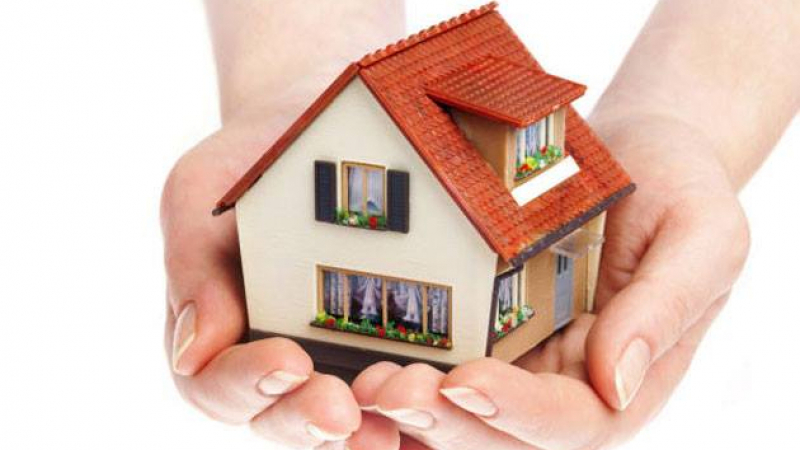A capital improvement is a long-term investment made by a business or organization that includes significant expenditures of money and resources. The investments are usually made in the form of property or a physical asset that is expected to provide long-term benefits and increase its overall value, efficiency, or usefulness over time. It aids in the improvement and enhancement of fixed assets that cannot be easily converted to cash.
Below are some best examples of capital improvements:
- The expansion, renovation, or remodeling of an existing property.
- The installation of new equipment or machinery into your business.
- Construction of a new building, roof, etc.
- Buying a property for future benefits.
- Installation of new HVAC systems, electrical systems, or plumbing
- Landscaping or site improvements
- Installation of new technology or software systems
- Major repairs or replacements to existing assets, such as a new roof or new windows
Important: Keep in mind that capital improvement does not involve general repairs, alterations, and routine maintenance made to keep the assets in working and good condition. To know more about capital improvement, you can check the IRS publication 523.
Advantages of making Capital Improvements:
Capital improvements are profitable investments made in fixed assets such as buildings, equipment, and infrastructure that are intended to improve their quality, efficiency, or capacity. Want to know, how capital improvements can benefit your business in the long run? Let’s find out!
- Increased efficiency: Capital improvements not only reduce downtime but also improve the production process which helps increase efficiency and profits.
- Improved quality: Businesses gain customer satisfaction and loyalty with improved quality of goods and services.
- Increased capacity: It also boosts the production of goods and services that further allow the business to take on more customers and increase revenue.
- Increased Overall property value: Capital home improvements helps increase the potential tenants or buyer by making it more attractive.
- Tax depreciation: With capital improvements, homeowners need not pay capital gain taxes while selling the property.
- Reduced maintenance costs: Such investments help save more money by eliminating the need for ongoing maintenance.
- Compliance with regulations: Businesses can easily comply with regulations, such as environmental or safety regulations, which prevent them from paying costly fines and legal issues.
What is Cost Basis & how it is related to Capital Improvements?
Before you get to know the relationship between the Cost basis & capital improvements; it’s important to understand each term individually. Let’s begin!
Cost basis or tax basis is a financial term that is used to measure the capital losses or gains when the asset is sold. Basically, this term refers to the original price or exact worth of an asset or investment. According to IRS standards, the cost basis includes:
- The cost of acquiring an asset
- Closing cost
- Improvements (if any) Cost
- Fees, commissions, and other acquisition-related charges.
On the other hand, Capital improvements as discussed earlier refers to the significant changes or improvements made to the property or asset to increase its efficiency, and overall value. It involves property expansion, construction, kitchen renovation, adding a new roof, etc.
So, how are they related to each other?
The cost basis is adjusted upwards to reflect the cost of the improvements. When the asset is acquired or sold, the cost of capital improvements is usually added to the cost basis of the asset to reduce the taxable profits.
How to calculate the cost basis of property?

Let’s say, you bought a rental property for $200,000 and then spent $40,000 on adding a roof and $50,000 on the kitchen renovation.
So, the cost basis of the property is $290,000 ($200,000 + $40,000 + $50,000).
How to calculate the taxable profit?
The taxable gain is the difference between the selling price and the original purchase price. Let us say, you decided to resell the property at $300,000, then your taxable profit will be $10,000.
Capital Investments that help in Tax Deduction:
The rules and regulations for tax deductions are pretty complex. The eligibility requirements may vary depending on the individual’s current situation, and type of capital investment. Below are some of the best types of capital investments that may qualify for tax deductions. Take a look!
Energy-efficient improvements
If you are planning to install solar panels, geothermal heat pumps, or energy-efficient windows and doors, then there is good news for you. The government offers tax incentives to such homeowners for making energy-efficient improvements.
Business equipment and machinery
Capital investments made by business owners for buying new machinery and equipment are eligible for a tax deduction.
Rental property improvements
Are you living in a rental house, then any permanent fixtures like roof replacement or HVAC system installation in the property help in tax deduction.
Charitable contributions
Another capital investment that is eligible for tax deduction is an investment made in a reputed & authorized charitable organization.
Medical Purposes
Investments or medical expenses made for the well-being of you, your spouse, or your family are eligible for a reduction in tax payments.
Research and development
Any investment made in research and development activities is qualified for tax credits or deductions. For more information on tax returns, we suggest talking to a qualified tax professional.
Capital Gain Tax Exemption
In simple words, Capital gains are the profits earned by an individual by selling assets such as primary home, stocks, mutual funds, or other major investments. It allows individuals to gain benefits by excluding a significant part of their capital gain from taxable income. Keep in mind that it is meant only for long-term capital gains obtained by selling the assets held for one or more years.
The limits & rules for capital gain tax exemption are subject to your tax situation and type of investment. There are several types of capital gains tax exemptions available for certain types of investments such as:
- Small Business Stock
- Qualified Dividends
- Certain Types Of Municipal Bonds
For example, In the US, the capital gains tax exemption limit is up to $250,000 for homeowners. Whereas, for married couples who file jointly, the limit is up to $500,000. The only condition is the seller must have lived in the house for a minimum of 2 years.
Best ways to Finance Capital Home Improvements:
Although there are several ways to finance home improvements, the best one depends on an individual’s goals and present financial status. Take a look!
- Home Equity Loans or Lines of Credit (HELOC): Such loan types allow you to borrow money against the built-up equity in your home. The rate of interest is usually lower than that offered in credit card or personal loans, and may or may not be tax-deductible.
- Personal Loan comes with high-interest rates and is the best option for borrowers with good credit history. You can easily obtain personal loans without putting up any collateral.
- Credit Cards are the easiest and most convenient option to finance capital home improvements with credit cards. But not to forget that interest rates are typically higher.
- Cash-Out Refinancing is a perfect option to borrow a higher amount than your current mortgage. Interest rates can be higher or lower on your second mortgage depending on the market rates.
- Government Agencies like FHA (Federal Housing Administration’s 203k) also offer loan programs specifically for home improvements.
- If you have enough savings in your account then there can be no better & cheaper option to finance your home improvements. The best part is you don’t need to pay any interest fee.
FAQs about Capital Improvement
What is the difference between a repair and a capital improvement?
Repair is the temporary fix or replacement of the broken appliances, etc. of property that are essential for maintenance. Whereas a capital improvement is a permanent fixture made to expand or upgrade the property to increase its value in the market.
How are capital improvements taxed?
When the property is sold by the homeowner, the cost of capital improvements is generally added to the cost basis of a property. It can help reduce tax deductions.
Why are capital improvements important?
Capital improvements not only upgrades and makes a property more attractive for buyers and tenants but also helps reduce tax deduction.
How do I decide which capital improvements to make?
Well, the choice depends on many factors like your goals, budget, return on investment, etc. For more clarity or financial advice, you can contact a contractor or real estate professional.
Summing up:
Capital home improvement is the best option so far that helps increase the value of your property, and lower the tax. Now you already know several ways to finance capital home improvement such as HELOCs, cash-out refinance, etc. that saves you from paying taxes. If you are ready to start your mortgage application, and seeking approval for the capital improvement project, then it’s the right time to consult a tax advisor.
Also Read:





